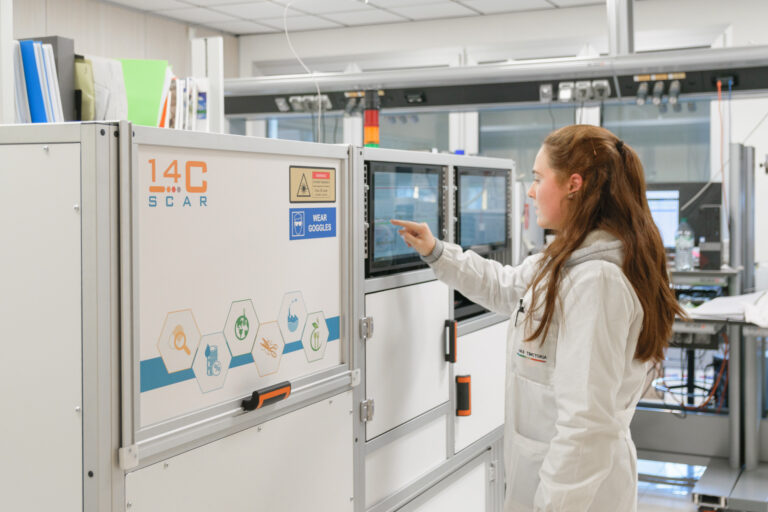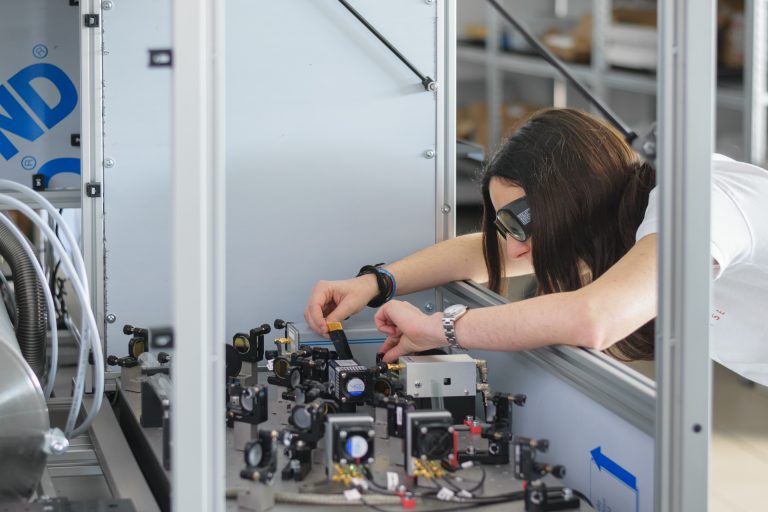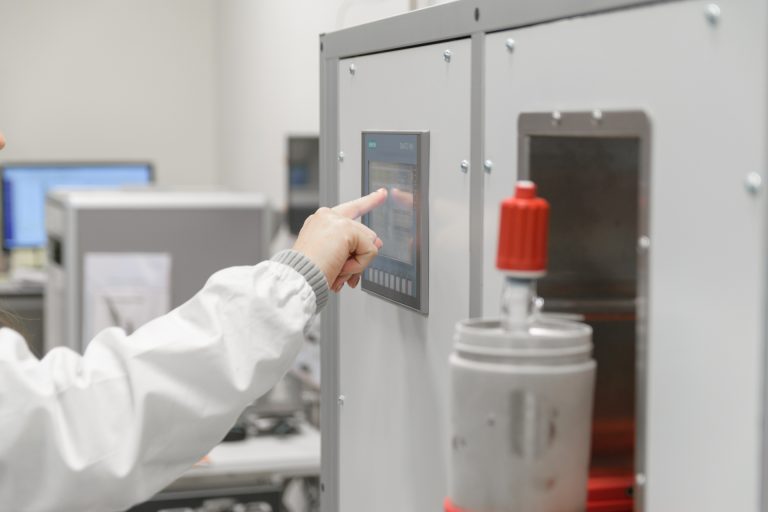Solutions / RADIOCARBON DET
Laser-Based Radiocarbon Detection
As it is continuously produced by cosmic rays in the upper atmosphere, ¹⁴C is a nature-supplied label for the biogenic origin of any carbon-containing material. Due to its 5700-years radioactive halflife, after the death of any living being, it also works as a natural clock for very long times.
Finally, it can also be used for pharmacology studies, environmental monitoring of fuel emissions, and safety monitoring of nuclear power plants and waste repositories.
C14-SCAR is a high-precision, laser-based, table-top ¹⁴CO₂ analyzer, based on a novel spectroscopic technique called saturated-absorption cavity ring-down (SCAR).
It is a rare opportunity for disruptive technology and competitive positioning in radiocarbon analysis markets.

SCAR for Materials
A transition is underway from fossil-derived materials to biobased, renewable materials. In this context, the need arises to control the fraction of a material that comes from renewable sources, i.e. that is biogenic.
ppqSense’ C14-SCAR is able to perform ¹⁴C analysis on various materials such as fabrics, plastics, fuels, solvents with measurement times and comparable with Accelerator Mass Spectrometry (AMS) and with a precision and versatility way higher that Liquid Scintillation Counting (LSC).
C14-SCAR for Dating
The ¹⁴C amount left long after a plant, animal, or human has died provides a quantitative way to date these types of biogenic samples. C14-SCAR precision allows to date samples up to 30,000 years old.
Dating accuracy will depend on available calibration curves and correction of fractionation effects by auxiliary ¹³C/ ¹²C measurements. C14-SCAR small footprint, as well as its low power consumption, make it a truly on-field deployable radiocarbon detector, opening new possibilities for real-time validation of archaeological excavations.

C14-SCAR for Pharmacology
The natural ¹⁴C label can be artificially enriched (even by orders of magnitude) to mark drugs and track their metabolic pathways in human clinical trials.
The unprecedented C14-SCAR dynamic range can enable seamless measurements over more than 5 decades of radiocarbon concentration (0.1 – 100000 pMC).
Since only small samples (urine, plasma, feces, etc.) are typically available, a specific, smaller volume model of the instrument, named BIO-SCAR, is currently under development for this kind of application.

SCAR for Enviroment
Emissions from fossil fuels can be tracked and quantified by measuring the ¹⁴C content of CO² in air. The lower the content, the higher the contribution from combustion of fossil sources.
f¹⁴CO² monitoring around nuclear power plants and waste repositories can ensure safety from radioactive hazards to both workers of nuclear sites and the population living in their vicinity.
C14-SCAR fast measurement routines will provide a quasi-continous air monitoring capability, in combination with innovative automated atmospheric CO² extraction processes that are being developed by our partners.

Radiocarbon Detection
Scar Materiali
Scar Datazione
Scar Farma
Scar Ambiente
MAGAZINE
Lorem ipsum dolor sit amet, consectetur adipiscing elit. Ut elit tellus, luctus nec ullamcorper mattis, pulvinar dapibus leo.


